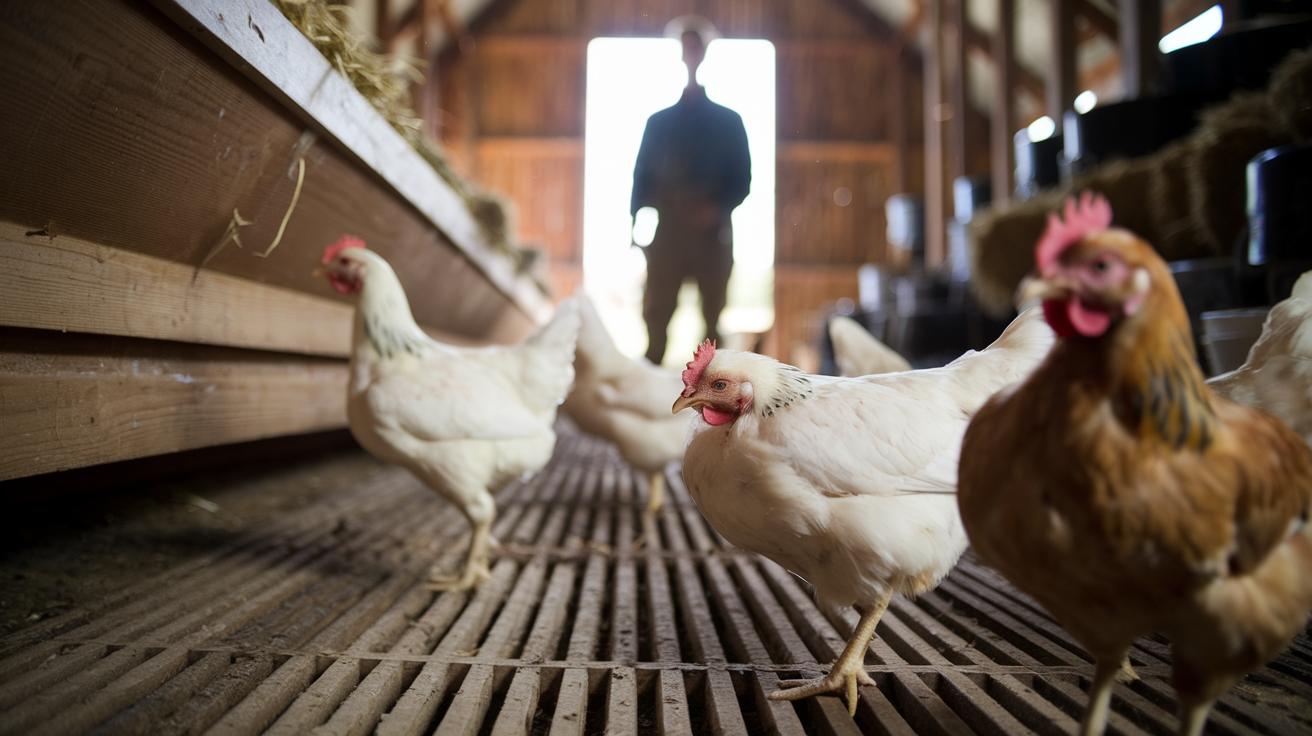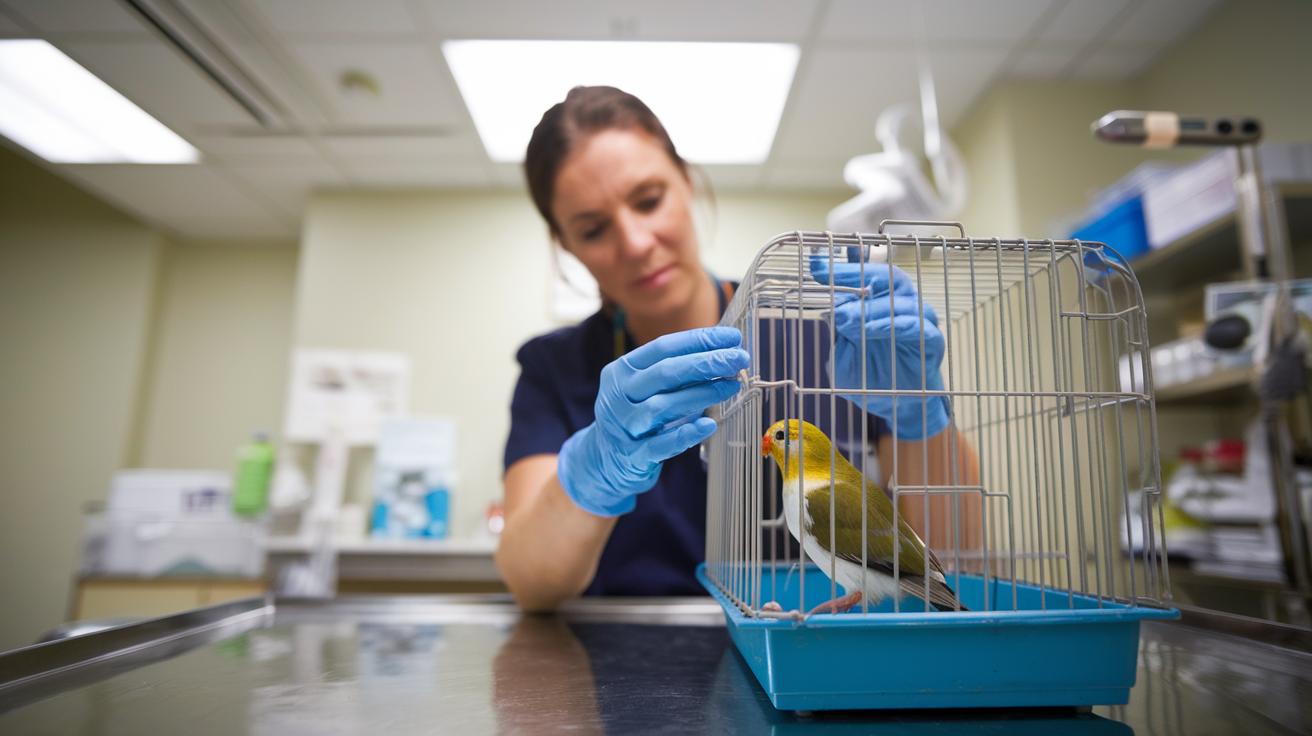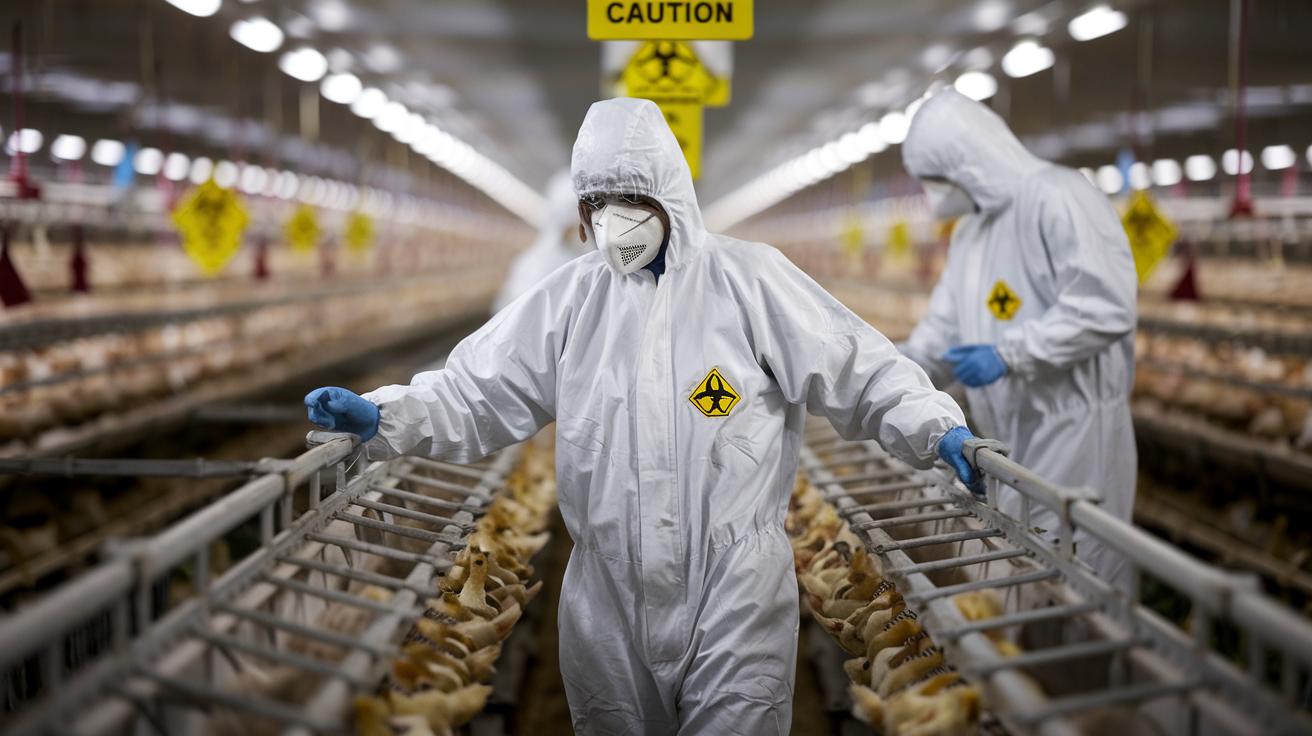How can one differentiate between a minor ailment and the ominous onset of bird flu in avian populations? The consequences of overlooking initial signs of this deadly virus can be devastating, particularly for poultry and wild birds. Understanding the clinical signs of bird flu is crucial for early intervention and outbreak prevention. From sudden death to behavioral abnormalities, bird flu presents a spectrum of symptoms that can easily be mistaken for other avian diseases. This article explores the key symptoms of bird flu that every bird owner and avian enthusiast should recognize, emphasizing the significance of vigilant monitoring and prompt response.
Recognizing Signs of Bird Flu in Birds

Bird flu, or avian influenza, significantly impacts avian populations, with numerous strains of the virus affecting both wild and domesticated birds. The Highly Pathogenic Avian Influenza (HPAI) strain, in particular, results in rapid mortality among poultry, whereas ducks and geese often remain asymptomatic carriers. This disease manifests in birds through various physical and behavioral symptoms and can lead to sudden, unexplained deaths, especially in species more susceptible to the virus. The reduction in water intake and other subtle behavioral changes might precede more severe outcomes, making vigilance crucial in managing potential outbreaks.
- Sudden and unexplained death
- Reduction in water intake
- Lethargy and inactivity
- Decreased egg production or malformed eggs
- Swelling of the head, eyelids, comb, hocks, and wattles
- Nasal discharge, coughing, and sneezing
- Diarrhea
Early detection and monitoring of these symptoms are vital for controlling the spread of bird flu. Poultry and bird owners must remain alert to these clinical signs, as they can indicate the presence of the virus before significant losses occur. Identifying and responding promptly to these symptoms can mitigate the impact on bird populations and help manage potential public health risks associated with avian influenza.
Identifying Bird Flu Symptoms in Humans

Human contraction of bird flu is notably rare, primarily affecting those with direct contact with infected birds. This transmission risk is heightened for poultry workers and others frequently exposed to avian environments. Human-to-human transmission remains exceptionally rare, with isolated cases documented under specific circumstances.
Symptoms of avian flu in humans vary widely, ranging from mild to severe. Initial indicators may include red sore eyes (conjunctivitis) and mild respiratory issues. More severe symptoms can mimic influenza, presenting with fever, cough, muscle aches, and fatigue. Some individuals may also experience gastrointestinal distress, such as diarrhea, or develop serious conditions like pneumonia or encephalitis. The diversity of symptoms necessitates careful monitoring, particularly for those with known exposure to infected birds.
Diagnosis of bird flu in humans typically involves laboratory testing of nasal and throat swabs to confirm the presence of the virus. Early intervention is crucial, with anti-viral medications, such as oseltamivir, recommended for managing symptoms and potentially reducing severity. These treatments are most effective when administered shortly after symptom onset. Public health efforts focus on rapid diagnosis and treatment to prevent further spread and mitigate health risks associated with avian flu exposure.
Monitoring Symptoms in Poultry and Domestic Birds

Bird flu, or avian influenza, poses a significant threat to domestic poultry, particularly when caused by the highly pathogenic avian influenza (HPAI) strain. This strain is known for its rapid onset and high mortality rates among affected flocks. The 2022-23 outbreaks have highlighted the vulnerability of backyard flocks, with the USDA documenting numerous cases across various regions. The consequences of these outbreaks can be devastating, leading to substantial economic losses and necessitating stringent biosecurity measures to curtail the spread of the virus.
Symptoms of bird flu in poultry and domestic birds are both varied and severe, often serving as early indicators of infection. Key symptoms include sudden and unexplained deaths, which can occur without prior noticeable signs of illness. Poultry may also exhibit a marked reduction in water intake, lethargy, and inactivity. Physical signs such as swelling around the head, eyelids, and wattles, coupled with respiratory issues like nasal discharge, coughing, and sneezing, are common. These symptoms, along with diarrhea and decreased egg production, underscore the multifaceted impact of the virus on bird health and productivity.
<Bird Type|Symptoms>
|———–|—————————————-|
| Chickens | Sudden death, reduced water intake |
| Turkeys | Lethargy, nasal discharge |
| Ducks | Often asymptomatic, but can carry virus|
| Geese | Swelling of head and eyelids |
| Quail | Decreased egg production, sneezing |
The implications of these symptoms for poultry farmers and bird owners are profound. Early detection and response to these signs are critical in managing outbreaks and minimizing losses. Effective monitoring and reporting of symptoms enable prompt intervention, reducing the risk of widespread transmission. For poultry farmers, understanding these clinical signs is essential for maintaining flock health and ensuring the continuation of operations. Implementing biosecurity measures and maintaining vigilance are key strategies in combating the challenges posed by bird flu in domestic settings.
Early Detection and Diagnosis of Bird Flu

Early detection of bird flu is critical for controlling outbreaks, particularly in poultry where the impact can be devastating. The Highly Pathogenic Avian Influenza (HPAI) strain presents with sudden and unexplained deaths among birds, serving as an immediate red flag for potential infection. Identifying these early signs allows for rapid response measures to be implemented, minimizing the spread of the virus and reducing the risk of transmission to other birds and potentially humans. In domestic settings, vigilance is paramount, as reduced water intake and behavioral changes may precede more visible symptoms.
- Observe for sudden, unexplained deaths in birds.
- Monitor for reduced water intake and lethargy in poultry.
- Conduct nasal and throat swabs for humans with suspected exposure.
- Use laboratory tests to confirm the presence of the virus in both birds and humans.
- Engage veterinary and medical professionals for accurate diagnosis and guidance.
Public health agencies play a crucial role in managing bird flu cases, coordinating efforts between agricultural and healthcare sectors to ensure effective containment. They provide guidelines for testing and reporting, enabling a swift response to confirmed cases. By facilitating communication and collaboration among experts, these agencies help to safeguard both avian and human health, preventing widespread outbreaks and mitigating potential public health risks associated with avian influenza.
Distinguishing Bird Flu from Other Avian Diseases

Bird flu, or avian influenza, shares several symptoms with other avian diseases, complicating the diagnostic process. Common signs such as lethargy, respiratory distress, and reduced egg production can be indicative of various infections affecting birds. These overlapping symptoms necessitate careful observation and consideration of other factors, such as the presence of nasal discharge, coughing, and changes in behavior. While these signs can point to general respiratory or digestive issues in birds, the context of recent outbreaks and exposure to infected birds should heighten suspicion of bird flu.
Avian influenza is distinguished by its rapid progression and the severity of its symptoms, particularly in the highly pathogenic avian influenza (HPAI) strain. This strain leads to high mortality rates within affected flocks, setting it apart from other diseases that may result in milder conditions. Sudden, unexplained deaths and significant reductions in water intake are hallmark indicators of bird flu. These features underscore the importance of swift action and accurate diagnosis to prevent further spread and protect avian and human populations from the potential impacts of this devastating disease.
Preventive Measures and Response to Bird Flu Outbreaks

Preventing the spread of bird flu necessitates the implementation of comprehensive biosecurity measures. These strategies are vital in minimizing the risk of avian influenza transmission among bird populations and reducing potential human exposure. Biosecurity plans typically involve controlling access to poultry farms, ensuring that only essential personnel enter, and requiring strict sanitation practices. Limiting contact with wild birds is also crucial, as they can carry the virus without showing symptoms and can easily transmit it to domestic flocks. By establishing robust preventive practices, farms can safeguard their birds and mitigate the risks associated with avian flu outbreaks.
- Isolate infected birds immediately: Quarantine affected birds to prevent further spread within the flock.
- Euthanize confirmed cases: Safely euthanize infected birds to control the virus and prevent further transmission.
- Conduct testing in a 6-mile radius: Perform tests on birds within the surrounding area to identify and contain potential infections.
- Implement strict biosecurity protocols: Enforce hygiene measures and restrict access to areas where birds are housed.
- Coordinate with health authorities: Report cases to public health officials to facilitate monitoring and response efforts.
Collaboration between health units and agricultural agencies is essential in managing bird flu outbreaks effectively. These partnerships enable the sharing of critical information and resources, ensuring a coordinated response to contain the virus. Health authorities provide guidelines for isolation and treatment, particularly for humans exposed to the virus, often involving anti-viral medications. By working together, these entities can implement strategies that protect both avian and human populations, thus minimizing the impact of bird flu on public health and agriculture.
Final Words
Understanding the signs of bird flu in both birds and humans is critical for early identification and control of outbreaks. Recognizing bird flu symptoms in birds, such as sudden death and changes in behavior, alongside symptoms in poultry, ensures timely intervention. Human infection remains rare, but awareness of potential symptoms and treatment options is necessary for those in direct contact with birds.
Diiferentiating bird flu from other avian diseases helps inform accurate diagnosis and treatment. Implementing preventive measures and devising strategic responses can mitigate the spread and impact of bird flu. Leveraging cooperation between health and agricultural sectors ensures effective containment efforts.
FAQ
What are the symptoms of bird flu in humans?
Symptoms of bird flu in humans include mild respiratory symptoms, sore eyes, fever, cough, and muscle aches. Testing swabs from the nose and throat are used for diagnosis.
How does bird flu spread to humans?
Bird flu typically spreads to humans through direct or close contact with infected birds, their droppings, or contaminated surfaces, making human infection rare.
Can bird flu kill humans?
Yes, bird flu can potentially be fatal to humans, especially if untreated, as severe cases have high mortality rates. Early diagnosis and antiviral treatment are crucial.
What are the symptoms of bird flu in birds?
Bird flu symptoms in birds include sudden death, reduced water intake, lethargy, coughing, sneezing, and swelling around the eyes, head, and neck.
How do chickens show symptoms of bird flu?
Chickens with bird flu exhibit symptoms such as sudden death, a drop in egg production, lethargy, nasal discharge, and swelling or discoloration around the head.
How to prevent bird flu in humans?
Prevent bird flu in humans by avoiding contact with infected birds, maintaining personal hygiene, and using protective gear when handling birds or their environments.
Is bird flu dangerous to humans?
Yes, bird flu poses danger to humans, with risks of severe respiratory illness and death, particularly involving highly pathogenic strains.
How long does it take for bird flu symptoms to appear in humans after exposure?
Bird flu symptoms in humans typically manifest within 2 to 8 days after exposure to the virus, though this can sometimes vary based on the specific strain.


